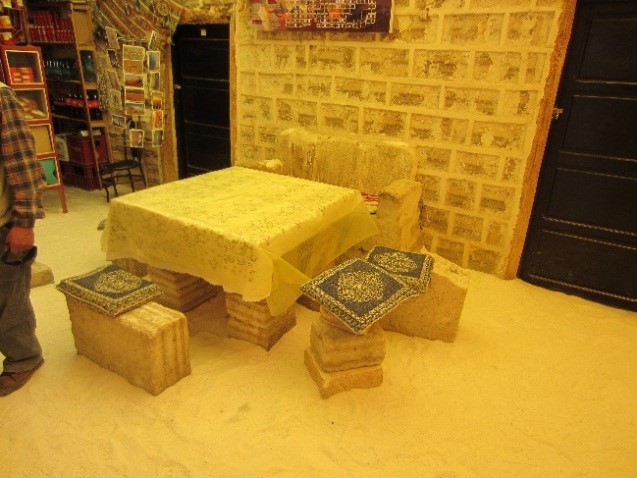09 – Salar de Uyuni – Tourist place, salt mine and lithium reserve
Ano 04 (2017) - Número 01 Artigos
![]() 10.31419/ISSN.2594-942X.v42017i1a9HP
10.31419/ISSN.2594-942X.v42017i1a9HP
Herbert Poellmann, Prof. Dr.Dr. Institute of Geosciences and Geography, Martin Luther University Halle-Wittenberg, Halle (Saale), Germany.
The Salar de Uyuni is a very famous area of more than 10000 km2 in the Altiplano at 3653m elevation. Besides the unique salt areas (Figure 1) with the polygonal drying systems, there are several other spots which are a must for a visit. The island of Incahuasi in the central part is very famous for the big and old cactus trees (Figure 5). Also worth for a visit are the houses completely built of NaCl (salt hotel) (Figure 2a,b) and close to town an old train cemetry (Cementerio de los trenes) (Figure 4).
The hard surface is completely built with the mineral halite, which forms nice cubic crystals underneath (Figure 3).
The island of Incahuasi in the central Salar de Uyuni is strewn with big old cactus trees (echinopsis atacamensis) (Figure 4).
Close to Uyuni town is an area where old trains and locomotives can be seen and visited.
But Salar de Uyuni is nowadays very well known because of its tremendous reserves of lithium which could be enriched from the occurring brines. A typical brine is being composed as given in table 1. By evaporation and separation the lithium can be an important raw material in the future.
Table 1. Typical composition of a Uyuni-brine
Uyuni-Brine: 1820 mg/L Li
- 40500 mg/L Mg
- 700 mg/L Na
- 21700 mg/L K
- 198000 mg/L Cl
- 37900 mg/L SO4
- 1720 mg/L B
LITERATURE
MUNK, A.L.: Lithium brines: A global perspective, Rev. In Economic geology 18, 339-365, (2016)







